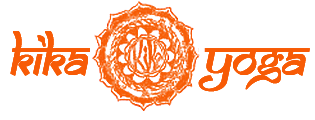Why Should I Meditate?
Listen. Are you breathing just a little and calling it a life? – Mary Oliver
Having a meditation practice is truly one of the greatest gifts you can give to yourself and others. It can be as simple as taking a few minutes each day to acknowledge your humanity, express gratitude for something in your life, set an intention for your day and watch the miracle of your breath. It does not need to be overwhelming, and it is certainly not a question of being bad or good. It is simply about making a commitment to yourself and to creating the sacred container to honor that.
Many of us talk ourselves out of meditating because we think we do not have the time or we feel that our other pursuits offer us the same benefits. Some of us don’t do it because it feels overwhelming or we don’t know where to start. Yet the only way to really know whether and how meditation can help us is to try it out.
Using the Breath
It is easy to take the breath for granted because it naturally sustains us without any effort on our part. While many of us enjoy moving our bodies and then finding deep relaxation afterwards, we avoid doing pranayama (breath control exercises) because they might not feel as useful, sexy or dramatic. Yet, the Yoga Sutras of Patanjali (2.49-2.52) outline just how powerful the breath can be to bring us into meditation.
As the fourth limb of yoga after asana (yoga postures), pranayama is the technique that directly moves our prana, which is the cosmic life force necessary for every living thing to function. Like yoga poses, mastering pranayama takes time and consistent practice, but it should not be complicated. To be effective, pranayama should be gentle, slow and fully controlled.
Yoga Sutra 2.52 defines the benefits of pranayama. As a direct result of the practice, the veil that shrouds the inner Light of I-AM is dissolved. This sutra teaches us that breathing techniques provide the vehicle designed to move us away from darkness and into the light of Unity.
How Does it Work?
By regulating our prana, we regulate our minds. If we see the mind as a veil of woven thoughts, pranayama pulls the thought threads out one by one until there are no thoughts holding the veil together. While the thoughts bind us to identify with the mind, the absence of thoughts gives us the space to connect with our true nature and find inner peace.
Where Do I Start?
If you want to start a meditation practice or expand an existing practice, start with your breath. The most important part of breathwork is to begin exactly where you are and build slowly and safely from there. Repetition is key to building muscle memory and to creating a daily routine that sticks. You are going to have a better chance of success if you commit to one technique for 5 minutes a day as opposed to jumping into a 30-minute practice of many different techniques.
The best place to start is with natural breathing, abdominal breathing, or deep rhythmic breathing with a ratio (such as inhale:exhale of 4:4, 4:5, 4:6 or longer exhale). The counting should be smooth and should never cause strain. If you are not familiar with these techniques and/or ready to learn other techniques, please work with a qualified teacher. Pay attention to how you feel and give yourself time to be still and silent. Be kind and curious as you cultivate discipline and self-care. You might find that with just 5 minutes a day you have more energy, less stress, improved concentration, and an overall feeling of vitality.
xo Kika

